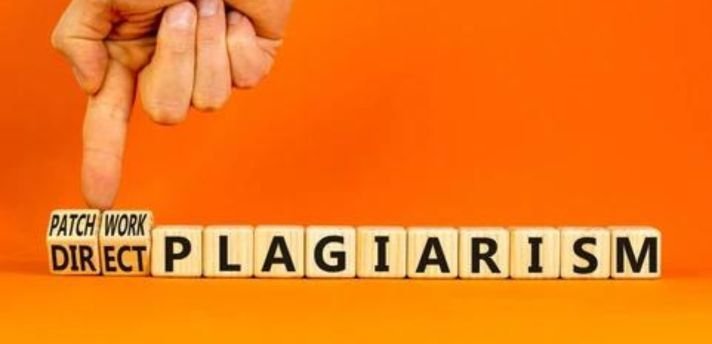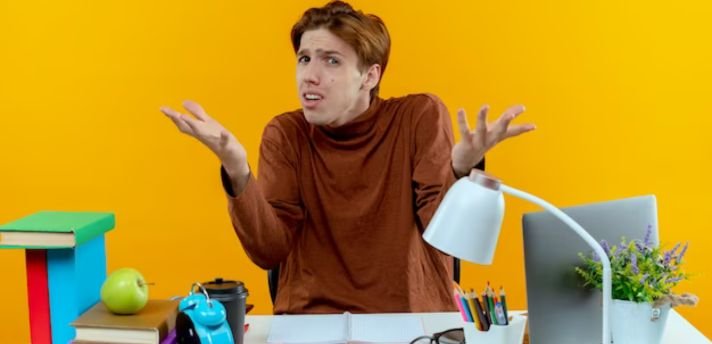

.jpg)
Patchwork plagiarism, also known as mosaic plagiarism, is one of the most common yet least understood forms of plagiarism. In this comprehensive guide, we'll explain what patchwork plagiarism is, the different types that exist, how to spot it, and why it matters.

Patchwork plagiarism, sometimes called mosaic plagiarism or global plagiarism, is defined as copying and pasting content from multiple sources without proper attribution. It is essentially a "patchwork" of other people's words and ideas presented as original work.
Global plagiarism is defined as using multiple distinct sources of content and piecing them together without proper citations. Global plagiarism is most often the result of laziness or time constraints rather than malicious intent. However, it is still considered plagiarism.
Global plagiarism occurs when a person copies sections from various websites, books, articles, or other sources and stitches them together into a "new" piece without indicating which parts came from where. The sources may be paraphrased or used verbatim, but in either case, the original creators are not given credit.
Essentially, global plagiarism takes content from many different puzzles and tries to pass it off as a new complete picture, when in reality, it's just a bunch of plagiarized fragments. Proper citations are what transform patchwork plagiarism into a legitimate mosaic of research.
There are a few main types of patchwork plagiarism to be aware of:
Mosaic plagiarism is similar to global plagiarism in that it involves taking content from multiple sources and interweaving it together. It focuses specifically on piecing together fragments of other works to create a "mosaic" without proper attribution.
This involves taking an old project or paper you have previously created and reusing substantial parts of it in a new assignment without citation. It counts as self-plagiarism.
This refers to combining perfectly cited sources with passages that are plagiarized without attribution. It demonstrates that you know how to cite properly but are still plagiarizing some content.
Many people commit patchwork plagiarism unintentionally due to improper paraphrasing, citation errors, missing quotations, and other mistakes. While it still counts as plagiarism, it may warrant more education than punishment.
In contrast, intentional patchwork plagiarism is the deliberate copying and pasting from sources to pass off the work as original. This type of plagiarism is considered unethical, fraudulent, and punishable.

There are a few key reasons mosaic plagiarism is concerning:
For these reasons, mosaic plagiarism should be taken seriously. Mastering citations and paraphrasing is crucial for both academic and professional integrity.
Identifying this type of plagiarism can be tricky since it combines multiple sources. Here are some tips:
With a trained eye, telltale signs of patchwork plagiarism include jumpy citations, incompatible writing styles, and too advanced or esoteric phrasing for the author's level. But when in doubt, plagiarism checkers offer the best detection.
Beyond patchwork plagiarism, there are a few other major types of plagiarism defined by how content is used:
This involves copying an entire work verbatim and passing it off as your own without any credits. This includes essays, articles, poems, artwork, and any other creative work, whether published or unpublished.
Also called copy-paste plagiarism, this is when specific passages, sentences, statistics, or other elements are lifted word-for-word without quotation marks or attribution. Even small amounts of uncredited direct copying is plagiarism.
Reusing large portions of your own past work without citing it is considered self-plagiarism. This includes work done for previous degrees, publications, or assignments. Some reuse is acceptable if properly cited and limited.
When writers neglect to cite sources due to carelessness, misunderstanding citation rules, or paraphrasing too closely, it counts as accidental plagiarism. While still problematic, it is more an issue of education than intention.
To illustrate, here are examples of direct, accidental, mosaic, and self-plagiarism:
Original Source: "The first vaccines against COVID-19 may be around 90% effective, the preliminary results of the trial suggest." - NYTimes, Nov 2020
Plagiarized Version: The first vaccines against COVID-19 may be around 90% effective, the preliminary results of the trial suggest.
(Copied word-for-word without attribution)
Original Source: "Tesla’s approach to innovation is an example of how commercial space companies are driving down costs and inspiring new applications here on Earth.” -Harvard Business Review, Nov 2021
Plagiarized Version: Tesla's method of innovation demonstrates how private space organizations are making things more affordable and creating new uses here on this planet.
(Paraphrased too closely without attribution)
Original Source A: "Machine learning algorithms continue to spread into diverse applications from data analytics to autonomous driving."
Original Source B: "However, machine learning systems also have problematic biases and opacity."
Original Source C: "Technology leaders need to prioritize ethics and transparency in AI."
Plagiarized Version: Machine learning algorithms continue to spread into diverse applications from data analytics to autonomous driving. However, machine learning systems also have problematic biases and opacity. Technology leaders need to prioritize ethics and transparency in AI.
(Posted together from 3 sources without citations)
Original Work in 2020 Paper: "...social media played a major role in spreading awareness of political movements around the globe during the last decade."
Reused in 2022 Paper: "...social media played a major role in spreading awareness of political movements around the globe during the last decade."
(Reused own past work without citation)

Now that you know what mosaic plagiarism looks like, here are some tips to avoid it:
With care, attention, and honesty during your research process, mosaic plagiarism can be avoided. Ambiguous citation rules may lead to accidental errors, so seek help if you are unsure rather than guess. Intentional plagiarism has no place in academic or professional work.
A: No, sources need to be cited each time you reference or quote the material, even if paraphrasing. Citing once at the end is not sufficient.
A: No, you still need in-text, parenthetical citations to indicate which specific ideas came from each source. A works cited page alone does not preclude patchwriting.
A: Not if you fail to cite. Paraphrasing someone else's ideas without attribution is still plagiarism, even if you change parts of their language.
A: Reusing substantial portions of your own work is considered self-plagiarism. You need to treat yourself like any other source and cite yourself appropriately.
A: Yes, copying any text word-for-word requires quotation marks, not just a citation. Otherwise, it is considered direct plagiarism.
A: When in doubt, cite. Review guidelines, ask your professor if uncertain, and err on the side of over-citing to avoid accidental plagiarism allegations.
A: Before accusing others, first, ensure you understand the specifics of plagiarism yourself. Different fields, institutions, and publishers also have their own policies. If you confirm blatant plagiarism, try gently pointing it out to give the person a chance to correct it. As a last resort, speak to your editor, instructor, or institution about proper protocols for reporting violations. Focus on solutions, not punishments.
Instructors have many techniques to identify potential plagiarism:
While software checking is common, human insights ultimately catch many cases of plagiarism.
In summary, patchwork plagiarism involves cobbling together content from multiple sources without properly citing them. This type of plagiarism violates copyright, demonstrates academic dishonesty, and fails to contribute original thought. Plagiarism detection tools and an attentive eye can identify signs like inconsistent citations and writing styles.
With care and integrity during the research process, plagiarism can be avoided. All sources should be properly summarized or quoted and attributed. This ensures we build off existing ideas the right way.
I hope this comprehensive guide helps explain exactly what mosaic plagiarism is and how to avoid it in your own work. With proper attribution and citations, we can build on existing ideas while still giving credit where it's due. What are your biggest takeaways about patchwork plagiarism? Let me know if you have any other questions!